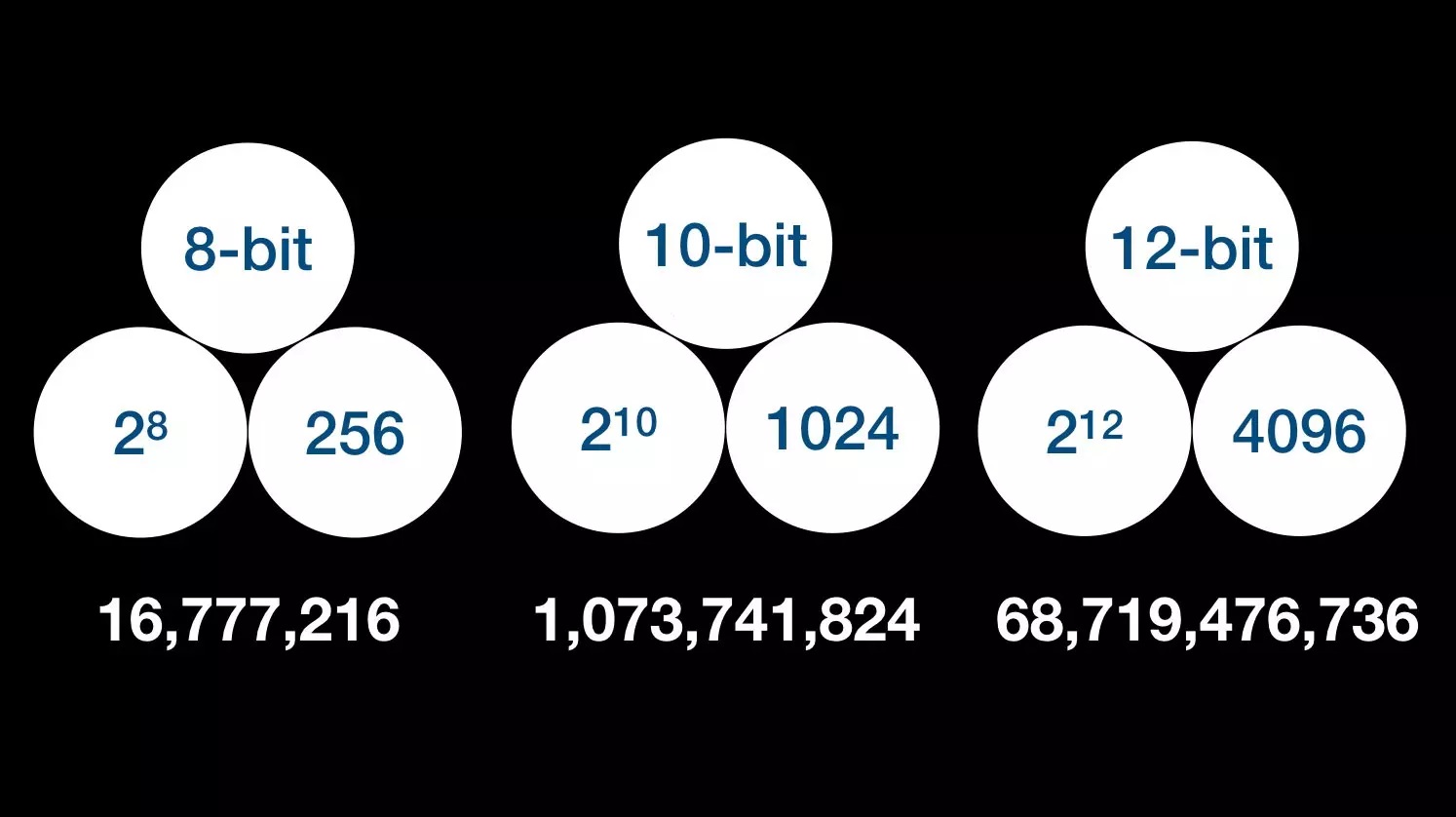What Is Color Depth And How Does It Affect Image Quality?
Color Depth, Pixel Depth, Or Bit Depth Refers To The Number Of Bits Per Pixel On The Screen That Represents A Particular Color. The Higher The Number Of Bits Per Pixel, The Greater The Variety And Quality Of The Screen Color.
You’ve probably encountered the so-called color depth when buying a TV or launching your new console. Color depth is a unit of measurement directly related to the number of colors that can be displayed on a screen and can affect image quality.
Bit depth is the number of bits used to represent the color of a single pixel in a bitmap image or frame-buffer video or the number of bits used for each pixel. The first graphics cards and monitors supported 1-bit monochrome, which was black and white; Older computers like the Apple Mac and the Atari ST were of this type. Today, most computers support at least 32-bit color depth, which allows 16.7 million different colors to be displayed.
What does color depth mean?
Each pixel is made up of three sub-pixels with primary colors; This means that modern monitors use red (R), green (G), and blue (B) channels or subpixels to create the image you see on the screen. The higher the color depth, the more colors can be displayed. In an 8-bit color monitor, each color (RGB) has an 8-bit array that can generate a total of 256 different color spectra per channel. By combining these channels, colors are created that use values between 0 and 255. For example, pure blue has a value of red 0, a value of green 0, and 255 blue. An 8-bit screen can display a total of 16.7 million (256x256x256) colors by combining different values at the sub-pixel level.

This feature is known as bit-per-channel (BPC), bit-per-component, or bit-per-color. These values are sometimes expressed in bits per pixel (BPP); In these cases, the bit rate per channel is tripled (one per channel). That’s why 8 bits per channel and 24 bits per pixel both point to the same value.
A small increase in color depth can make a big difference in the image and the total number of colors possible. For example, a 10-bit video can display 1024 color spectrums (4 times the 8-bit color space) for red, green, and blue channels, resulting in 1.07 billion colors (1024x1024x1024).
The color depth in the real world
So far,r we know that the greater the color depth, the greater the number of colors that can be displayed, and the more colors that can be displayed, the higher the image quality; For example, the color of the image we see of an object on the screen will be more similar to its true color. In the real world, deeper colors mean better images; Because the greater the color depth, the higher the ability to choose between shades of red, green,n, and blue. This does not necessarily make the image look more saturated or colorful, But it increases the variety of available colors. For example, to create an image of a lush forest, the more we choose green and brown shades and shades, the more natural and vivid the image looks. Sometimes for an artist who wants to sell his work, creating more realistic images will attract more customers.

Usually, when we look at spectra of a single color, we become more aware of the meaning of image depth.
To better understand this, look at the image of the sky above. When the color depth is lower, the parts that change color shade are discontinuous and linearly recognizable; Because the number of selectable shadows is less and more limited. On the other hand, the higher the image depth, the smoother and smoother the color spectrum change will be. Because there is more color spectrum and more shadows in a 10-bit color space, subtle color changes are less noticeable. In these cases, the transition from a light spectrum to a darker spectrum will be less noticeable.

You can see the difference between the black and white color spectrums at different bit depths in the image above. As it turns out, the color combination at the depths of the higher colors is very smooth and unrecognizable.
Color depth evolution
As technology advanced and systems resources increased, so did color depth. The following is a list of all the depths of different colors over time:

1 bit (2 1 or 2 colors): Monochrome display
2 bits (2 2 or 4 colors): CGA display
4-bit (2 4 or 16 colors): EGA display
8-bit (2 8 or 256 colors): VGA display
16-bit (2 16 or 65,536 colors): XGA display
24-bit (2 24 or 16,777,216 colors): SVGA display
32 bits (16,777,216 colors + alpha channel (2 32 or 4,294,967,296 color combinations))
48 bits (2 48 or 281,474,976,710,656 colors)
Color depth on TV
Most TVs can only display 8-bit images, But many newer TVs are equipped with 10-bit panels. In the future, 12-bit panels will also be introduced. However, unlike the big difference between 8-bit and 10-bit TVs, the difference between 10-bit and 12-bit panels is insignificant.













